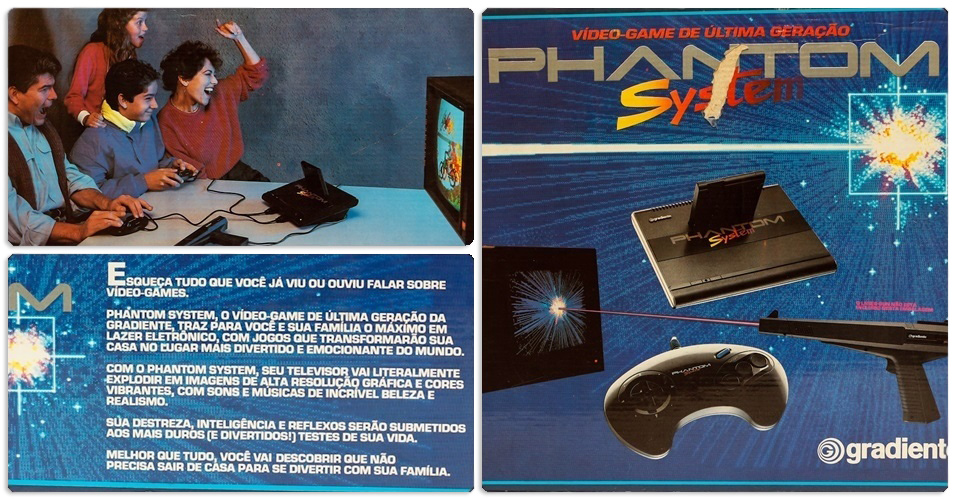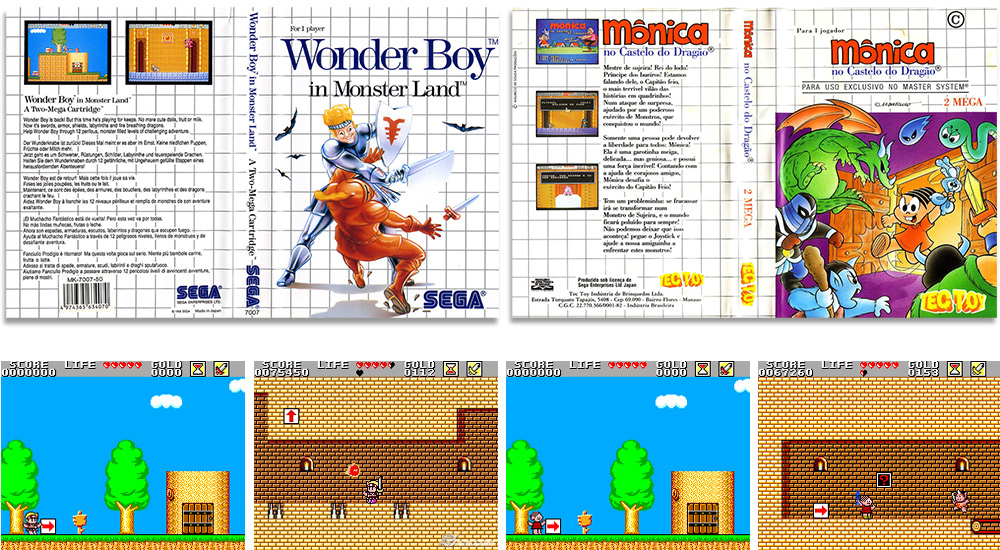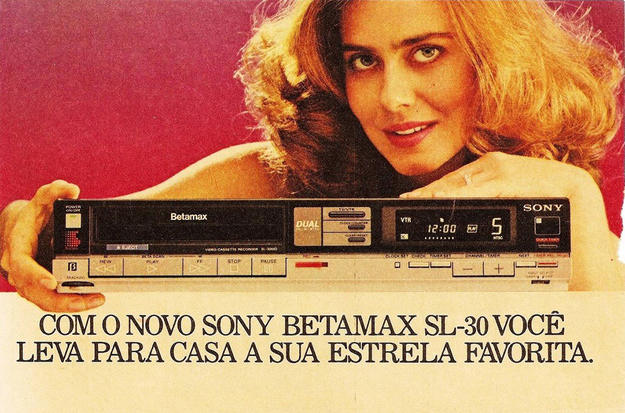Brazil, 80s & 90s
by Pedro Mizukami, researcher,
co-coordinator of the Brazilian components of
the “Media Piracy in Emerging Economies” project
MAJOR COMPANIES
Under the import substitution policy put in place in the early 80s, the Brazilian market was closed, and we could only get official machines through contraband, so local companies started to mass-produce clone machines. The earliest memory that I have of this involves the Nintendo Entertainment System. First came the Dynavision II by Dynacom (1989) and then the Phantom System by Gradiente (1990), probably the most popular NES clone, released right at the end of the import substitution policy. So alongside software piracy and pirated cartridges, we also had unlicensed pirate machines produced in Brazil. It was much cheaper to buy contraband machines than to buy the officially licensed, domestically assembled ones. Gradiente had an official license for the cartridges it commercialized, but it also treated unlicensed pirated cartridges under a different company name. They would officially release their licensed material for the unlicensed machines, but they would also produce unlicensed content. The pirated hardware and cartridge were mostly cross compatible; you could use an adaptor to load Japanese cartridges, and of course cartridges that you rented could be pirated or genuine.

LOCAL CUSTOMIZATIONS
What is interesting is that there were local customizations of video games, even with official and licensed games. Tec Toy, for instance, would produce versions of games with characters that were popular in Brazil at the time. We had a very popular series of comic books called Turma da Mônica, Monica’s Gang in English. Tec Toy produced versions of games using characters from Turma da Mônica, one was called Mônica no Castelo do Dragão (Monica at the Dragon’s Castle) released in 1991. The original game was called “Wonder Boy in Monster Land”; they just removed Wonder Boy from the cartridge, inserted Monica and Monica related characters, and commercialized that. That’s an official modification, but of course there were pirated ones as well. And there were also leaked, pre-released versions of games. I remember very clearly “World of Illusion,” a Mickey Mouse game. The version that we could rent in shops was a developer version (a pre-release), and it was actually much more interesting than the later commercialized one. The source of most of the pirated versions of console games was Paraguay, and during the NES era, most of the rental market of cartridges was pirated. It was very hard to find an official game, even from the USA, Europe, or Japan. Those eventually got into the market, but in small quantities.

thepiratebook.net - 2015
